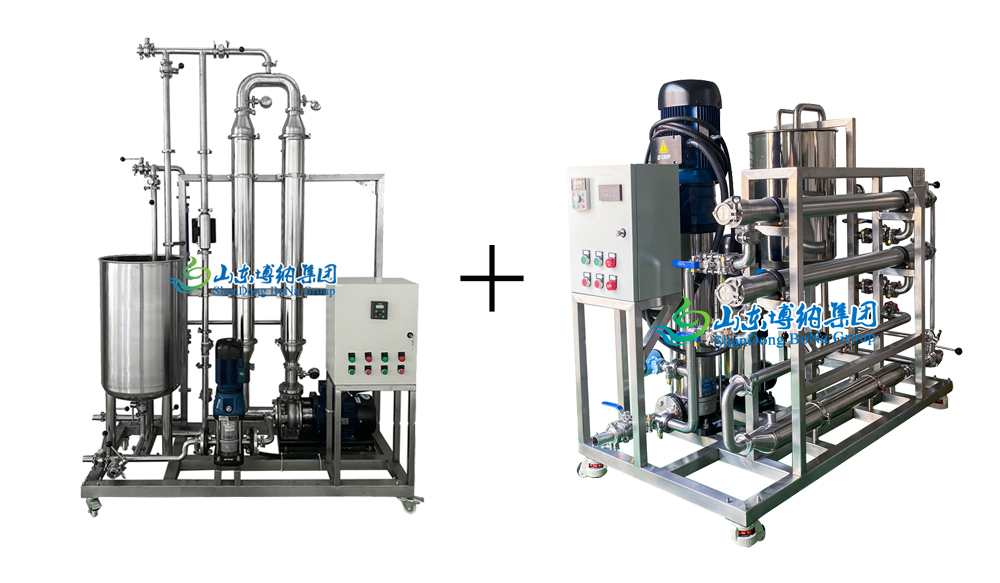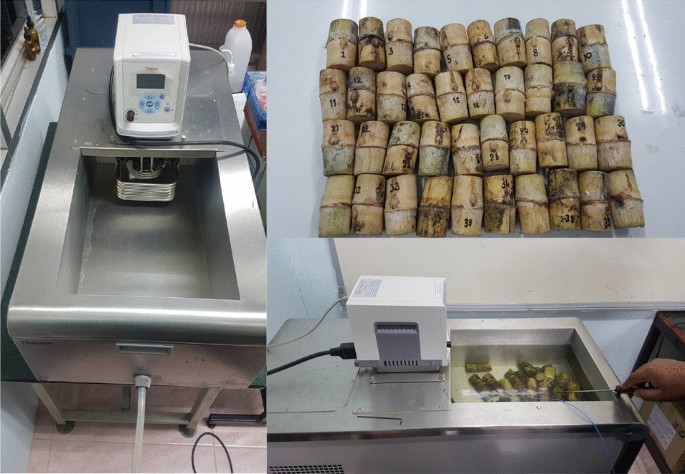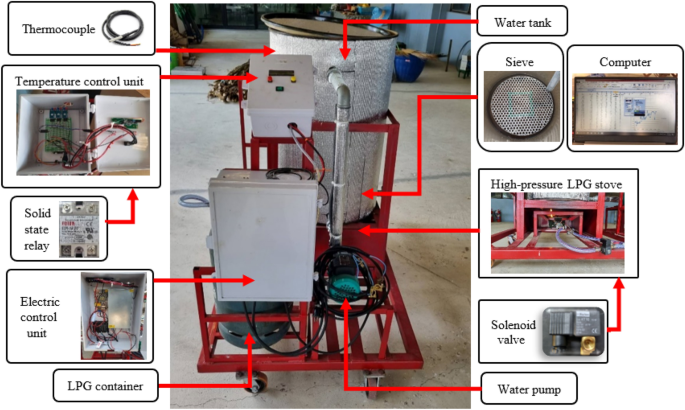Products From Sugarcane and Their Role in Reducing Carbon Emissions
Products From Sugarcane and Their Role in Reducing Carbon Emissions
Blog Article
Opening the Potential of Products From Sugarcane: a Comprehensive Guide
The potential of sugarcane extends far beyond its conventional use for sugar production. This overview explores the complex applications of sugarcane, from power and eco-friendly products to health products. By analyzing its trip from area to factory, it reveals just how sustainable practices can change waste right into valuable resources. As markets look for green services, the question continues to be: how can these advancements reshape our method to farming and production?

The Journey of Sugarcane: From Area to Manufacturing facility
Sugarcane goes through a remarkable improvement as it takes a trip from lavish fields to busy factories. In the fields, the high, green stalks are harvested, typically by mechanical methods or hand-operated labor. Once reduced, the sugarcane is promptly transported to processing centers to assure optimum quality. At the factory, the first step involves crushing the cane to remove the wonderful juice, which consists of sucrose. Products From Sugarcane. This juice is after that filteringed system and clarified, eliminating impurities. Following this, it goes through dissipation to focus the sugar material, resulting in condensation. The resulting sugar crystals are separated from the remaining molasses through centrifugation. Finally, the sugar is dried out and packaged for circulation. Throughout this journey, maintaining top quality and effectiveness is vital, as the techniques used directly impact the item's final quality. This improvement not just highlights the agricultural importance of sugarcane yet likewise its significant role in the international economic climate
Sugar and Its By-products: Greater Than Just Sweetness
The improvement of sugarcane right into polished sugar opens the door to a large range of items and applications that extend past simple sweetness. Sugar and its derivatives, such as molasses, brown sugar, and sugar, play important duties in numerous sectors, including food, pharmaceuticals, and cosmetics. In the food market, these active ingredients improve tastes, enhance texture, and function as preservatives.Molasses, a by-product of sugar production, is rich in minerals and vitamins, making it an important component in organic food and animal feed. Glucose, a straightforward sugar originated from sugarcane, acts as a considerable power resource in sports nutrition and is vital in the production of confectionery. Additionally, sugar derivatives are made use of in fermentation processes, contributing to the manufacture of liquors and other microbial products. In general, the flexibility of sugar and its derivatives highlights their importance past mere sweetness in everyday life.
Biofuels: Harnessing Energy From Sugarcane

A significant part of global biofuel production currently relies upon sugarcane, recognized for its high power return and efficiency in converting sunshine right into biomass. This tropical crop serves as a main resource for ethanol, a renewable fuel that can change gasoline in vehicles. Sugarcane's capacity to create more ethanol per hectare than various other feedstocks, such as corn, contributes to its increasing appeal among biofuel producers.The fermentation procedure of sugarcane juice or molasses generates ethanol, which can be blended with fossil fuels to minimize greenhouse gas discharges. Additionally, by making use of the residual bagasse from sugarcane processing, power can be produced with combustion, additional enhancing the sustainability of biofuel manufacturing. As countries look for to mitigate environment change influences, sugarcane biofuels provide an encouraging service, strengthening power security and advertising farming sustainability while supporting country economic situations.
Naturally degradable Plastics: The Lasting Alternate
Just how can industries move to even more sustainable methods in the face of growing plastic contamination? One promising solution hinges on eco-friendly plastics stemmed from sugarcane. Unlike standard petroleum-based plastics, these bioplastics supply an environment-friendly choice that can greatly minimize environmental impact. Made from eco-friendly sources, sugarcane-based plastics break down a lot more quickly in various conditions, lessening garbage dump accumulation and aquatic debris.The manufacturing of eco-friendly plastics not only addresses waste management obstacles however also straightens with the raising customer need for sustainable products. Industries embracing these materials can improve their brand name picture while adding to a circular economic climate. Additionally, the modification to eco-friendly alternatives motivates advancement and financial investment in brand-new technologies, cultivating a greener industry landscape.As much more companies recognize the advantages of sugarcane-derived plastics, the potential for prevalent fostering boosts, paving the way for a more lasting future in product packaging and product layout.
Pet Feed and Fertilizers: Using By-products
The results of sugarcane processing hold significant capacity for both animal nourishment and organic plant foods. These results can be included right into pet feed, supplying important nutrients while reducing waste. Furthermore, they can offer as efficient organic plant food choices, improving dirt health and advertising lasting farming methods.
Results in Pet Nutrition
While sugarcane is mainly valued for its sucrose material, its by-products play an important role in animal nourishment, particularly in the form of animal feed and plant foods. The coarse deposit recognized as bagasse, produced during the extraction of juice, serves as a useful resource of roughage for animals. This high-fiber product improves food digestion and promotes total health and wellness in ruminants. In addition, molasses, a byproduct of sugar refining, is abundant in energy and can be used to supplement pet diets, boosting palatability and nutritional worth. Furthermore, vinasse, a fluid byproduct from ethanol production, consists of important nutrients and can be made use of as a feed additive. Overall, sugarcane by-products contribute significantly to sustainable animal nourishment practices.
Organic Fertilizer Options
Making use of sugarcane byproducts extends past pet official site nutrition to incorporate natural plant food options that profit agricultural techniques. The fibrous residues, such as bagasse and filter cake, act as reliable natural fertilizers, enhancing dirt wellness and enhancing crop returns. These materials are rich in nutrients, including potassium, phosphorus, and nitrogen, vital for plant development. When decayed, they boost soil framework, water retention, and microbial activity, promoting a lasting farming community. Additionally, using sugarcane byproducts for fertilizing minimizes dependence on artificial fertilizers, advertising environmentally pleasant agricultural techniques. By reusing these by-products, farmers can add to a round economic climate while optimizing their performance and minimizing waste. This approach exhibits innovative methods in lasting farming, leveraging sugarcane's full navigate to these guys capacity.
Health and Wellness: Nutritional Benefits of Sugarcane
Various studies highlight the nutritional advantages of sugarcane, making it a valuable enhancement to a balanced diet. Rich in essential nutrients, sugarcane contains substantial quantities of minerals, carbohydrates, and vitamins, particularly vitamin Potassium, c, and calcium. These elements add to general health, sustaining immune feature and bone strength.Moreover, sugarcane is an all-natural source of antioxidants, which aid combat oxidative anxiety and swelling in the body. Its high fiber web content aids in digestion, advertising intestine health and avoiding irregularity. Additionally, sugarcane juice has actually been linked to hydration and power replenishment, making it an exceptional choice for professional athletes or those participating in strenuous activities.Furthermore, the glycemic index of sugarcane is reasonably low, enabling a more progressive release of power, which may be useful for individuals taking care of blood sugar degrees. Overall, incorporating sugarcane right into one's diet can supply a revitalizing and nourishing choice for health-conscious people.
Innovations in Sugarcane Products: Future Trends and Possibilities
What advancements lie ahead for sugarcane items as markets seek to improve sustainability and consumer allure? The future of sugarcane items is poised for significant innovations, driven by the need for eco-friendly choices. Technologies in bio-based product packaging, stemmed from sugarcane, are acquiring traction, providing a lasting replacement for typical plastics. Additionally, the expedition of sugarcane's bioactive substances is most likely to bring about brand-new health supplements and functional foods, maximizing its natural benefits.Research Check This Out right into fermentation procedures might produce unique biofuels, better diversifying sugarcane's utility. Furthermore, the development of genetically modified sugarcane varieties promises raised returns and resistance to bugs, consequently supporting sustainable farming techniques. As customers come to be extra environmentally aware, the combination of transparency in sourcing and manufacturing approaches will certainly also play an important role fit the future of sugarcane products. Eventually, these innovations could redefine sugarcane's setting in international markets.
Frequently Asked Inquiries
What Are the Environmental Effects of Sugarcane Farming?
The ecological impacts of sugarcane farming include deforestation, loss of biodiversity, soil deterioration, and water pollution - Products From Sugarcane. Additionally, too much pesticide and plant food usage can hurt ecosystems, while monoculture practices might bring about minimized strength versus climate change

Just How Is Sugarcane Processed Into Different Products?
Sugarcane processing includes harvesting, crushing, and removing juice, which is then made clear and concentrated. The resulting syrup can be fermented for ethanol or taken shape for sugar, while fibers are used for bioenergy and various other products.

Are There Any Type Of Wellness Dangers Related To Sugarcane Consumption?
The concern of wellness threats connected with sugarcane usage highlights issues such as extreme sugar consumption, prospective allergies, and stomach concerns. Moderation is important to mitigate these threats while appreciating its nutritional benefits.
What Are the Economic Benefits of Sugarcane Cultivation?
The financial benefits of sugarcane farming include job production, enhanced farming productivity, and contributions to regional economic climates. Additionally, it supports renewable resource manufacturing and offers various byproducts that can enhance success within diverse markets.
How Does Sugarcane Contrast to Other Renewable Resources?
Sugarcane, as a renewable source, demonstrates greater effectiveness in biomass manufacturing contrasted to numerous alternatives. Its versatility permits different byproducts, contributing significantly to sustainable practices, financial growth, and decreasing reliance on nonrenewable fuel sources. Glucose, a straightforward sugar derived from sugarcane, serves as a significant energy resource in sports nutrition and is vital in the production of confectionery. Sugarcane's ability to create even more ethanol per hectare than various other feedstocks, such as corn, contributes to its enhancing popularity amongst biofuel producers.The fermentation process of sugarcane juice or molasses produces ethanol, which can be combined with fossil gas to lower greenhouse gas discharges. In addition, sugarcane juice has been connected to hydration and energy replenishment, making it an exceptional option for professional athletes or those engaging in strenuous activities.Furthermore, the glycemic index of sugarcane is fairly reduced, allowing for a much more gradual launch of energy, which may be beneficial for people taking care of blood sugar degrees. In addition, the exploration of sugarcane's bioactive substances is likely to lead to new health supplements and functional foods, capitalizing on its all-natural benefits.Research into fermentation procedures might produce novel biofuels, additionally branching out sugarcane's energy. The concern of health and wellness dangers linked with sugarcane consumption highlights worries such as too much sugar intake, possible allergic reactions, and stomach problems.
Report this page